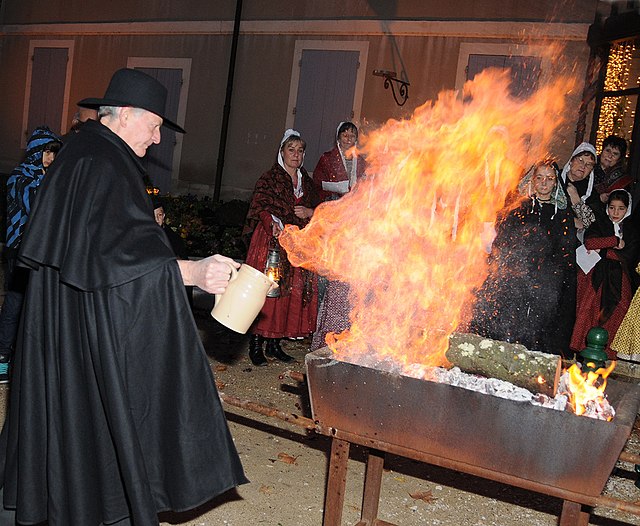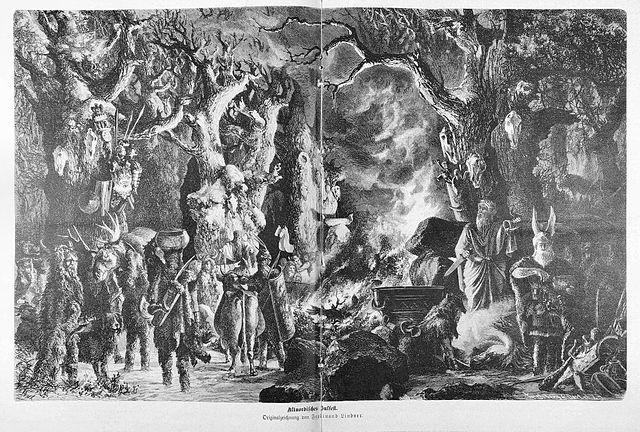The Yule log, Yule clog, or Christmas block is a specially selected log burnt on a hearth as a winter tradition in regions of Europe, and subsequently North America. The origin of the folk custom is unclear. Like other traditions associated with Yule, the custom may ultimately derive from Proto-Indo-European religion as similar traditions have been recorded in Celtic, Germanic, Baltic and Slavic paganism, among others.
Cacho fio Noël celebrations in Beaumes-de-Venise.
Badnjak logs burning in the hearth, Christmas Eve in Dalmatia.
Yule is a winter festival historically observed by the Germanic peoples that was incorporated into Christmas during the Christianisation of the Germanic peoples. In present times adherents of some new religious movements celebrate Yule independently of the Christian festival. Scholars have connected the original celebrations of Yule to the Wild Hunt, the god Odin, and the heathen Anglo-Saxon Mōdraniht. The term Yule and cognates are still used in English and the Scandinavian languages as well as in Finnish and Estonian to describe Christmas and other festivals occurring during the winter holiday season. Furthermore, some present-day Christmas customs and traditions such as the Yule log, Yule goat, Yule boar, Yule singing, and others may have connections to older pagan Yule traditions.
Illustration of an ancient Nordic Yule festival (Die Gartenlaube, 1880)



